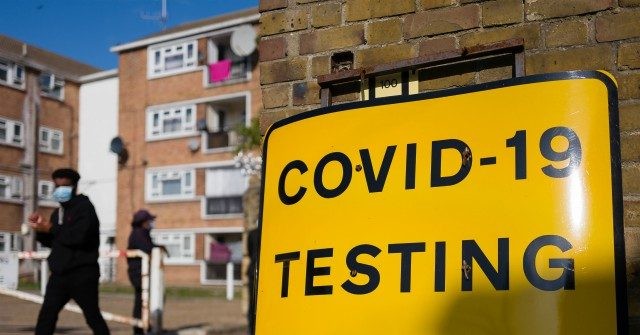

The Johnson administration has imposed localised restrictions in the North East of England, affecting millions, while government scientists have reportedly advised a second nationwide lockdown next month.
Confirmed by Health Secretary Matt Hancock only on Thursday, from Friday parts of the North East finds itself under new restrictions that ban people from mixing with others outside of their household and a 10 pm curfew on pubs, restaurants, and other social venues.
Areas affected include County Durham, Sunderland, North Tyneside, South Tyneside, and Northumberland, according to Sky News. The measures were brought into place after the number of patients hospitalised and on ventilators in the region rose to more than 100 for the first time since July.
Liverpool and Merseyside are also reported to be facing an announcement of similar measures, according to the Liverpool Echo.
Meanwhile, the Financial Times claims that specialists from the government’s Scientific Advisory Group for Emergencies (Sage) and the Scientific Pandemic Influenza Group on Modelling (Spi-m) have advised Boris Johnson to introduce a national lockdown across the UK for two weeks in October, to coincide with children’s half-term vacation.
One Sage scientist reportedly claimed that if the infection rate continued at the same level, then it would “break the NHS”. Britons were given the impression that the first national lockdown was imposed in March to get the NHS and its field hospitals up to speed and increase the stock of medical supplies. Former Supreme Court judge Lord Sumption said that the first lockdown had outlived its usefulness by mid-April “after its only sensible objective had been achieved” of increasing hospital bed capacity. NHS Nightingale London was put on standby in May after having barely been used — and presumably is in a state to be reactivated should there be a spike in numbers.
“It’s not deadly in a very large section of the population, so that presents us with this workable solution.”
Epidemiologist @SunetraGupta says if the UK is “aggressively protecting” the vulnerable then education, jobs and the arts can resume. #bbcqt pic.twitter.com/jA46dT1H3D
— BBC Question Time (@bbcquestiontime) September 17, 2020
Just this week, the government introduced a new ‘rule of six’ which prohibits citizens from meeting in groups larger than half a dozen. Those in contravention of the rules could be told to disperse, fined, or even arrested.
Addressing the House of Commons on Wednesday, Prime Minister Johnson had said that second lockdown would be “disastrous” for the economy. He said: “I don’t want a second national lockdown — I think it would be completely wrong for this country, and we are going to do everything in our power to prevent it.”
However, a government source told the Financial Times that if the ‘rule of six’ restrictions does not work, “a whole range of unpalatable options come into view”.
The source said that while in government there was “a very strong reluctance to go anywhere near another national lockdown”, he stressed that “there’s a difference between not wanting to go back to another lockdown and having to go back.”
On Friday, Health Secretary Matt Hancock would not rule out a second lockdown, telling Sky News: “I don’t want to see that, but we will do whatever is necessary to keep people safe in a very difficult pandemic.”
Mr Hancock added: “It isn’t something that we ever take off the table, but it isn’t something that we want to see either, it is the last line of defence.”
The Snitching Begins: Nosey Neighbour Calls Police on Wake in Pub Garden https://t.co/Im7r8gX99W
— Breitbart London (@BreitbartLondon) September 18, 2020
Appearing as a guest on the BBC’s Question Time on Thursday, epidemiologist Sunetra Gupta said that while the virus is currently at low risk, it cannot be held at that state without significant cost to society, advocating instead for protecting the vulnerable whilst allowing children to go back to school and adults to fully go back to work.
“It’s not deadly in a very large section of the population, so that presents us with this workable solution,” Dr Gupta said. She added that society could be “preserve[d]” by “aggressively protecting… those who are indeed vulnerable to this infection which can be deadly in a certain sector of the population”.
“The good news is, we know, now who is vulnerable to a very large degree and we know… about the enormous costs of some of these measures,” she continued, explaining that there should be “creative solutions to protect the vulnerable” while allowing others to live their lives.
“We cannot hold [the virus] at low risk forever without paying these extreme costs,” she warned.
Boris Govt Backtracks: Don’t Snitch Unless Neighbours Are Having ‘Animal House’ Parties https://t.co/8M1QLQMD4q
— Breitbart London (@BreitbartLondon) September 17, 2020
 RSS Feed
RSS Feed















 September 18th, 2020
September 18th, 2020  Awake Goy
Awake Goy  Posted in
Posted in  Tags:
Tags: 













